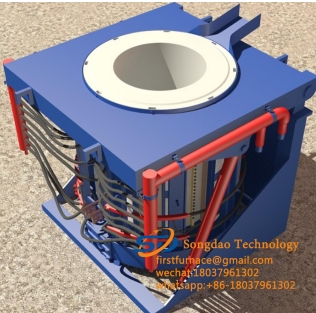- 29
- Oct
5 good ways to operate an induction melting furnace!
5 good ways to operate an induction melting furnace!
(1) When the cold material of the hot furnace lining melts, the initial charging can only be filled to 50% of the crucible height. When the current drops to the voltage that can increase to the rated value, continue to feed the crucible. (This is because the resistivity of the cold charge is small, the current is large, and the regulating voltage is limited by the current, which affects the power input). To
(2) During the production process, it is not allowed to overfill or even exceed the furnace mouth at one time. Because the charge above the upper end of the induction coil has a weak magnetic field, it mainly relies on the molten iron below to transfer heat for heating, so the melting speed is slow. At the same time, because the furnace cannot be covered, a large amount of heat energy is dissipated through the furnace mouth, which reduces productivity. To
In addition, the crucible at the upper end of the induction loop and the furnace lining at the junction with the nozzle are not easy to compact, the furnace is not perfect, and the sintering is not good, but the mechanical vibration stress is the largest, so furnace leakage is likely to occur in this section. Therefore, the solution surface in the crucible should be controlled to be flush with the upper end surface of the induction coil. To
(3) Although the molten iron in the induction melting furnace can be emptied, it is good for smelting different materials. However, if the material is not changed, it is better to leave residual liquid in the furnace. This is because because there is molten iron in the furnace, the charged charge is easily connected into many large pieces, and the single pieces of charge will be arc bridged and welded together to form a large piece, thereby increasing the melting rate. The speed of arcing and bridging between a single small charge depends on the frequency. The frequency is low, and the lap welding speed is low (the reason why the industrial frequency furnace must leave residual liquid to melt).
If it is not emptied, there is a small amount of molten iron at the bottom of the furnace, and the disadvantages of using a lower frequency can be easily overcome (the frequency of the induction melting furnace is relatively low). In addition, since the residual liquid has a small load change at the beginning of power-on, high power can be input from the beginning, at least it can shorten the melting time of the metal charge. To
(4) When feeding, avoid the maximum surface of molten iron exceeding the limit of 80% of the capacity, so as not to cause accidents when the molten iron overflows the furnace mouth.
(5) Add a small piece of charge first and then increase the piece of charge.

